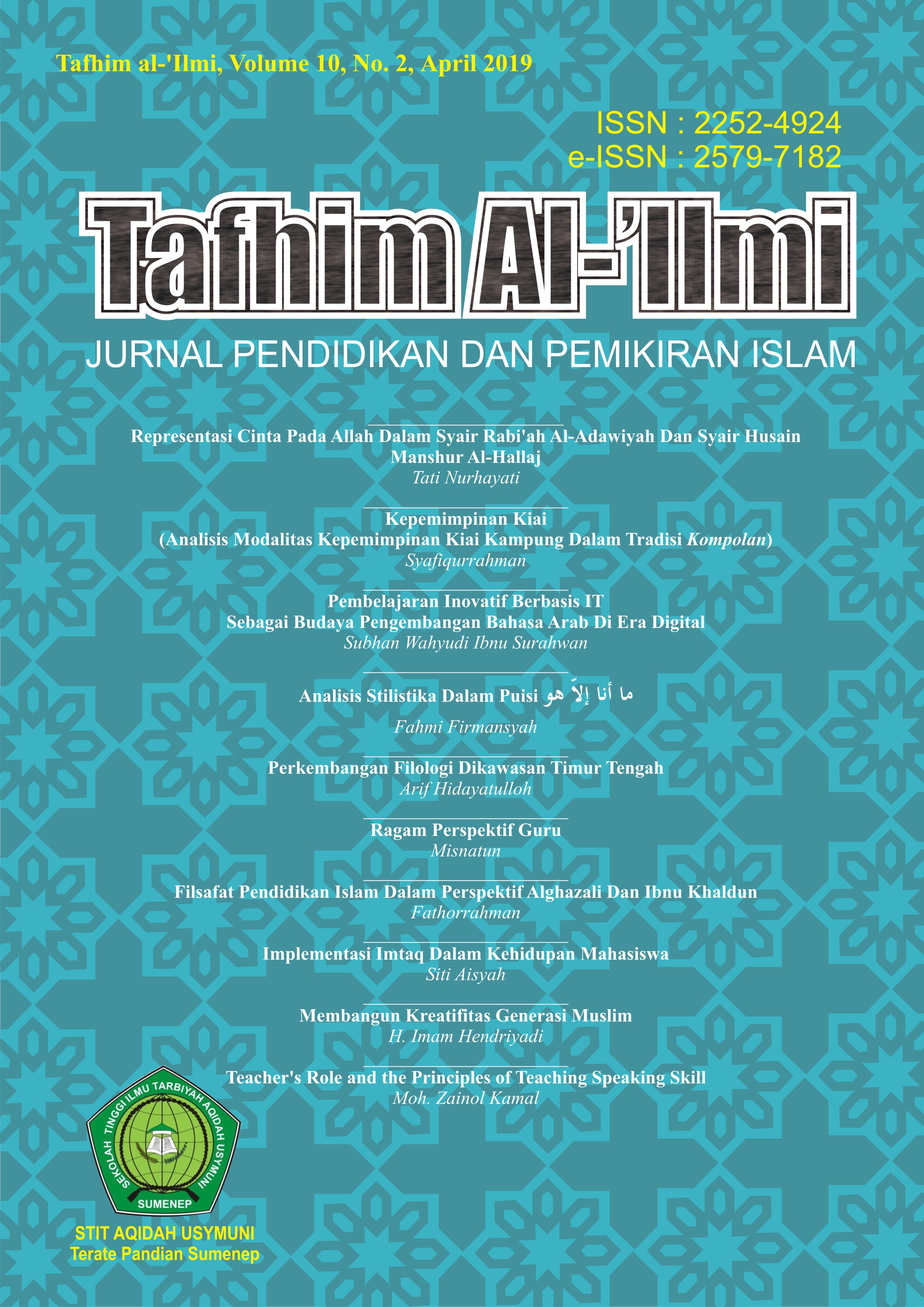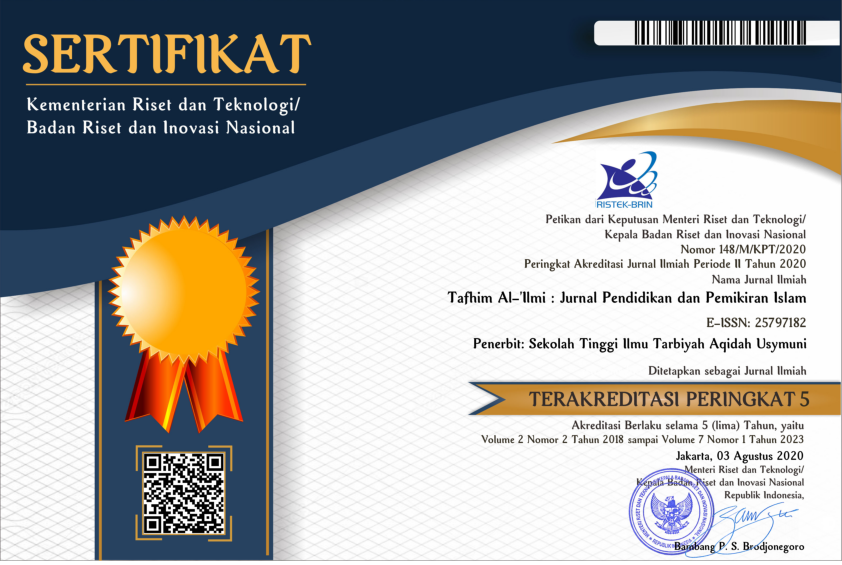ANALISIS STILISTIKA DALAM PUISI ما أنا إلّا هو KARYA MAHMŪD DARWῙSY
DOI:
https://doi.org/10.37459/tafhim.v10i2.3424Abstract
MahmÅ«d DarwÄ«sy is a famous Palestinian poet. He is known as a humanist poet, most of whose poems are resistance themes. The style of poetry writing is more like the classical Arabic writing style with simple and beautiful words but rich in meaning. One of his poems that has a beautiful classic writing style is ما أنا إلّا هو (mÄ anÄ illÄ huwa). So, the stylistic study was seen as more appropriate to dissect the beauty of Mahmoud Darwish's poetry writing style. In accordance with the stylistic theory initiated by Syihabuddin Qalyubi, this analysis examines the style of poetic language ما أنا إلّا هو by MahmÅ«d DarwÄ«sy from the domain of phonology, morphology, syntax, semantics and imaginary of the poet. It aims to find out how beautiful the poem is and what message the poet wants to convey to the listener and or poet reader ABSTRAK MahmÅ«d DarwÄ«sy merupakan penyair kenamaan Palestina. Ia dikenal sebagai penyair humanis yang kebanyakan dari puisinya bertema perlawanan. Gaya penulisan puisinya lebih mirip gaya penulisan arab klasik dengan kata-kata yang sederhana dan indah namun kaya akan makna. Salah satu puisinya yang memiliki gaya penulisan klasik nan indah adalah ما أنا إلّا هو (mÄ anÄ illÄ huwa). Maka, kajian stilistika dipandang lebih tepat untuk membedah keindahan gaya penulisan puisi karya MahmÅ«d DarwÄ«sy ini. Sesuai dengan teori stilistika yang digagas oleh Syihabuddin Qalyubi, analisis ini membedah gaya bahasa puisi ما أنا إلّا هو karya Mahmoud Darwish dari ranah fonologi, morfologi, sintaksis, semantik hingga imageri-nya. Ini bertujuan untuk mengetahui seberapa indah puisi tersebut dan pesan apa yang hendak disampaikan penyair bagi pendengar dan atau pembaca puisinya. Kata Kunci: Stilistika Puisi, Mahmoud Darwish, mÄ anÄ illÄ huwa.Downloads
Published
2019-05-01
How to Cite
Firmansyah, F. (2019). ANALISIS STILISTIKA DALAM PUISI ما أنا إلّا هو KARYA MAHMŪD DARWá¿™SY. Tafhim Al-’Ilmi, 10(2), 57–71. https://doi.org/10.37459/tafhim.v10i2.3424
Issue
Section
Articles








